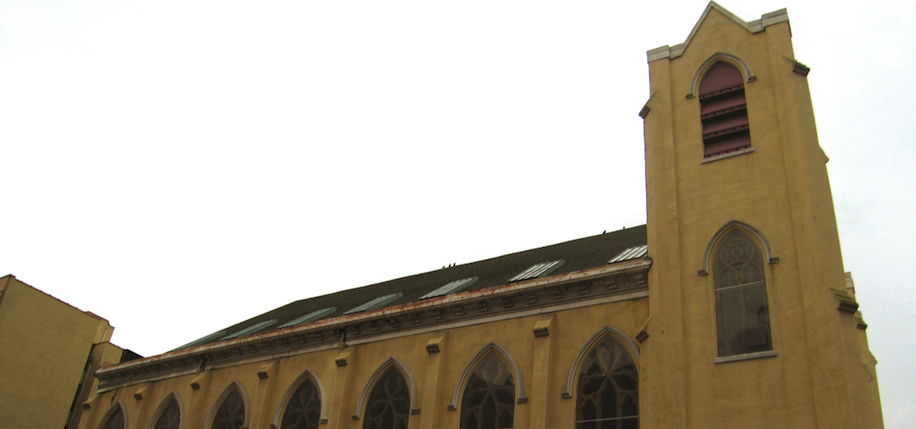As we go to press, the future of St. Brigid’s Church hangs in the balance. On August 24, parishioners and supporters in favor of saving St. Brigid’s received a morale booster when Judge Barbara Kapnick granted a temporary restraining order on any further demolition of the East Village, New York, church while she deliberated on the evidence.
The Gothic-style church was designed by Tipperary man Patrick Keely, who moved to New York when he was 25 and went on to have a long and distinguished career as an architect. The cornerstone was laid in September 1848 and the church was completed 15 months later, the work carried out by Irish craftsmen who had fled famine in Ireland. The church became a refuge for prayer and solace for Irish immigrants in the New World. Its wealth of history and significance to the community seems to have been lost on the archdiocese, which closed the parish in 2004 and wish to demolish the building. They argue that it is structurally unsafe and estimate that it would cost over $7 million to repair, saying that in particular, the east wall needs to be completely replaced. However, a report by an independent structural engineer estimated repair costs at $323,000. “This could [now] be a lot more due to the damage done by contractors,” committee member Jerome O’Connor told Irish America. Crews moved in and began to break down the church, destroying the historic stained-glass windows (pictured above) and smashing an eight-foot-hole in the east wall. The crew then proceeded to haul the pews onto the street and destroy them in front of distraught parishioners.
A legal battle has ensued, and one of the core issues is the validity of the demolition permit. St. Brigid’s Church is property of the parish, and any permit application should have been made by the parish board. The board is made up of the cardinal, the vicar general, the parish pastor and two members of the parish. The parish board did not apply for the demolition permit, a representative of the archdioceses did. There has been no pastor in the now defunct parish for several years. The Manhattan Borough Commissioner put a hold on the permit, but on July 18 the permit was granted by the Citywide Commissioner Barbara Lancashire, as a parish board meeting had convened the same day to rubber-stamp the application. Since there was no pastor, a canonical administrator stood in and two parish members, whose names the archdiocese refuse to divulge, convened. The parishioners’ legal team is arguing that the original application was illegal, as the archdiocese representative had no right to apply for a demolition permit on a building it did not own.
The human element in this case cannot be overestimated. Parishioners who baptized their children, married their loved ones and held funerals for their dead at St. Brigid’s are loath to see the spiritual focal point of their lives razed to the ground. Committee member Peter Harding underlined the historic importance of the church. “It’s heartbreaking. The church is a unique coming together of Famine people who all settled in what was at the time a shipbuilding area. This church is not a memorial to the famine people, it is their work.”


Leave a Reply